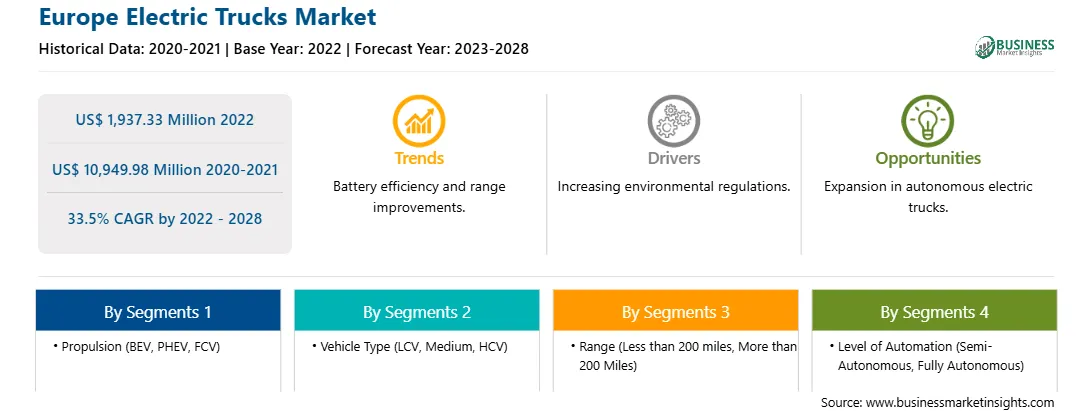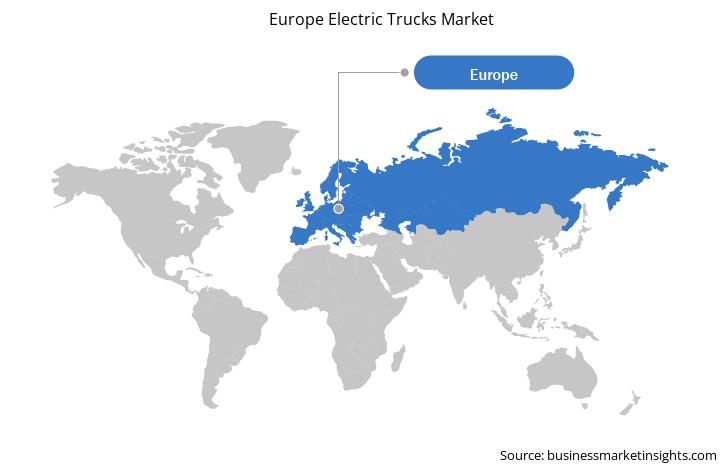In the past few years, government initiatives to promote the adoption of advanced transportation solutions such as electrification in both light and heavy vehicles. The first factor accelerating the use of electric components in heavy vehicles, such as tractors and agricultural machinery, is pressure from legislators and authorities for emissions control to reduce carbon dioxide and boost fuel efficiency. Integrating electrification in the automotive industry would significantly enhance ambient air quality standards in urban areas. Secondly, there would be a rising concern towards corporate social responsibility for major fleets and operators to maintain environmental ethics. Trucks with ranges from 150-300 km, with batteries, are supposed to play a vital role in urban areas where concern for air quality is high, and therefore need for stringent emissions laws is mandatory.
Furthermore, according to the International Energy Association (IEA), governments spent US$ 14,000 million on direct purchase incentives and tax exemptions for electric vehicles in 2020. Additionally, several governments responded to the economic slowdown brought by the COVID-19 epidemic with incentive programs and tax concessions that helped boost electric vehicle sales. Thus, the electric trucks market is growing due to the abovementioned factors.
Vendors can attract new customers and expand their footprints in emerging markets with new features and technologies. This factor is likely to drive the Europe electric trucks market at a healthy CAGR during the forecast period.
Strategic insights for the Europe Electric Trucks provides data-driven analysis of the industry landscape, including current trends, key players, and regional nuances. These insights offer actionable recommendations, enabling readers to differentiate themselves from competitors by identifying untapped segments or developing unique value propositions. Leveraging data analytics, these insights help industry players anticipate the market shifts, whether investors, manufacturers, or other stakeholders. A future-oriented perspective is essential, helping stakeholders anticipate market shifts and position themselves for long-term success in this dynamic region. Ultimately, effective strategic insights empower readers to make informed decisions that drive profitability and achieve their business objectives within the market.

| Report Attribute | Details |
|---|---|
| Market size in 2022 | US$ 1,937.33 Million |
| Market Size by 2028 | US$ 10,949.98 Million |
| Global CAGR (2022 - 2028) | 33.5% |
| Historical Data | 2020-2021 |
| Forecast period | 2023-2028 |
| Segments Covered |
By Propulsion
|
| Regions and Countries Covered | Europe
|
| Market leaders and key company profiles |
The geographic scope of the Europe Electric Trucks refers to the specific areas in which a business operates and competes. Understanding local distinctions, such as diverse consumer preferences (e.g., demand for specific plug types or battery backup durations), varying economic conditions, and regulatory environments, is crucial for tailoring strategies to specific markets. Businesses can expand their reach by identifying underserved areas or adapting their offerings to meet local demands. A clear market focus allows for more effective resource allocation, targeted marketing campaigns, and better positioning against local competitors, ultimately driving growth in those targeted areas.

The Europe electric trucks market is segmented on the basis of propulsion type, vehicle type, range, level of automation, and country.
Based on propulsion, the market is segmented into BEV, FCV, and PHEV. The BEV segment is the dominant one in 2022 and is expected to be the fastest-growing segment during the forecast period.
Based on vehicle type, the market is bifurcated into LCVs and medium & HCVs. The LCV segment is the dominant one in 2022 and is expected to be the fastest-growing segment during the forecast period.
Based on range, the market is segmented into less than 200 miles and more than 200 miles. The more than 200 miles segment has emerged as the dominating one in 2022 and is expected to be the fastest-growing segment during the forecast period.
Based on level of automation, the market is segmented into semi-autonomous and fully autonomous. The fully autonomous segment has been dominant in 2022 and is expected to be the fastest-growing segment during the forecast period.
Based on country, the regional market is segmented into Germany, France, Italy, the UK, Russia, and the Rest of Europe.
AB Volvo; BYD Company Ltd.; Daimler AG; FAW Group Co., Ltd; Navistar, Inc.; PACCAR Inc.; Proterra Inc.; Rivian; Scania; and Tesla, Inc. are leading companies in the Europe electric trucks market.
The Europe Electric Trucks Market is valued at US$ 1,937.33 Million in 2022, it is projected to reach US$ 10,949.98 Million by 2028.
As per our report Europe Electric Trucks Market, the market size is valued at US$ 1,937.33 Million in 2022, projecting it to reach US$ 10,949.98 Million by 2028. This translates to a CAGR of approximately 33.5% during the forecast period.
The Europe Electric Trucks Market report typically cover these key segments-
The historic period, base year, and forecast period can vary slightly depending on the specific market research report. However, for the Europe Electric Trucks Market report:
The Europe Electric Trucks Market is populated by several key players, each contributing to its growth and innovation. Some of the major players include:
The Europe Electric Trucks Market report is valuable for diverse stakeholders, including:
Essentially, anyone involved in or considering involvement in the Europe Electric Trucks Market value chain can benefit from the information contained in a comprehensive market report.